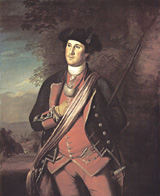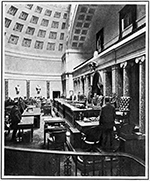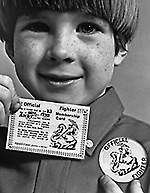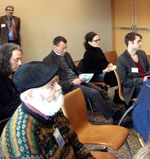1. Runyon v. McCrary, 1976: Private schools may not discriminate on the basis of race.
The Court decided that the 1871 Civil Rights Act gave the federal government power to override private as well as state-supported racial discrimination.
2. Epperson v. Arkansas, 1968: Prohibiting the teaching of evolution in public schools is unconstitutional.
The Court took on the case despite the fact that the state of Arkansas had never attempted to enforce its statute against teaching evolution.
3. Brown v. Board of Education of Topeka, 1954: Racial segregation in public schools is unconstitutional.
State laws that had set up "separate but equal" schools for black students and white students were overturned, because such schools were "inherently unequal," and so violated the Equal Protection Clause of the 14th Amendment.
4. Meyer v. Nebraska, 1923: Prohibiting the teaching of foreign languages in grade schools is unconstitutional.
A Nebraska law had prohibited the teaching (before high school) of any subject to any child in any language other than English. The plaintiff was a parochial school teacher who had taught German to one of his students.
5. Abington School District v. Schempp, 1963: Requiring the reading of Bible verses in public school classrooms is unconstitutional.
A Pennsylvania State law had required public schools to open each day with a reading, without comment, of 10 Bible verses.
6. Pierce v. Society of Sisters of the Holy Names of Jesus and Mary, 1925: Parents may send their children to private schools rather than public schools.
The State of Oregon had been on the verge of forcing all children to attend public schools in order to encourage immigrants' assimilation.
7. Engel v. Vitale, 1962: Requiring the recitation in public schools of an official school prayer is unconstitutional.
A Hyde Park, New York, school had opened each school day with a prayer addressed "Almighty God," which the Court held violated the Establishment Clause of the 1st Amendment (extended to the individual states by the 14th Amendment).
8. United States v. Virginia, 1996: Excluding either gender from any public school is unconstitutional.
The Court ruled that the Virginia Military Institute had not demonstrated a persuasive reason for excluding women, and so violated the Equal Protection Clause of the 14th Amendment.
9. Wisconsin v. Yoder, 1972: Parents may refuse to send their children to school after 8th grade if it violates their religious beliefs.
Amish parents had taken their children out of school after 8th grade, for religious reasons, and state authorities had attempted to force them to attend high school.
10. Tinker v. Des Moines Independent Community School District, 1969: Student protest is protected by 1st Amendment freedom of speech.
The protest in question was students' wearing of black armbands with peace symbols during the Vietnam War.


 For more on major U.S. Supreme Court cases, try a search in our
For more on major U.S. Supreme Court cases, try a search in our 

 Rubella
Rubella Diphtheria
Diphtheria  Smallpox
Smallpox  Polio
Polio The Centers for Disease Control and Prevention website provides resources on (largely present-day) health and health practices, but its
The Centers for Disease Control and Prevention website provides resources on (largely present-day) health and health practices, but its 

